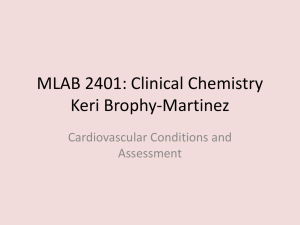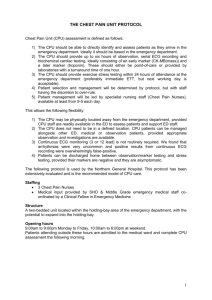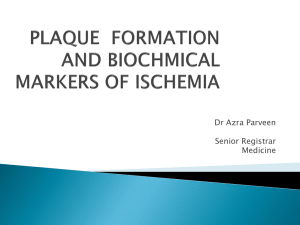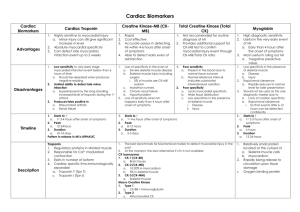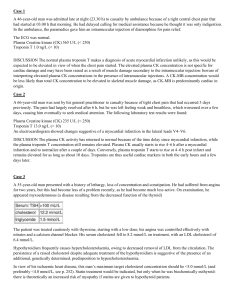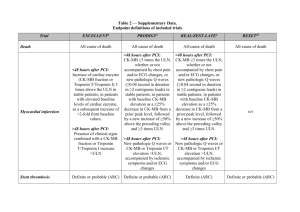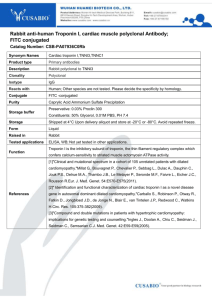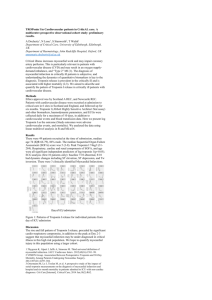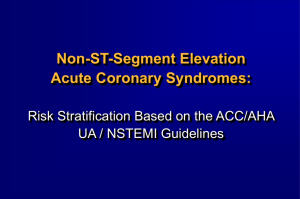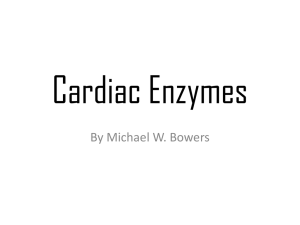Basic 12 Lead ECG Interpretation Word 97-2004
advertisement
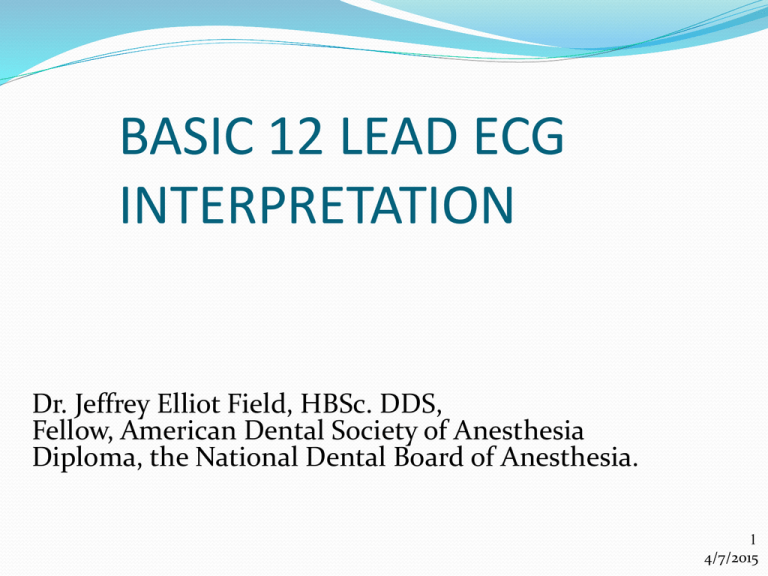
BASIC 12 LEAD ECG INTERPRETATION Dr. Jeffrey Elliot Field, HBSc. DDS, Fellow, American Dental Society of Anesthesia Diploma, the National Dental Board of Anesthesia. 1 4/7/2015 Objectives To gain a cursory understanding of 12 lead ECG’s 2 4/7/2015 Basic 12 Lead Interpretation 4/7/2015 3 12 lead ECG’s give you the opportunity to look for all the arythmias we have studied in a 360 degree view of the heart with the added bonus of being able to diagnose and localize myocardial infarctions ( i.e. areas of muscle damage) Remember to look at all leads to rule out all of the arrhythmias and abnormalities we have studies thus far. In particular look first at Leads I , II, and III as these will be the most familiar to you . 4/7/2015 4 In a 12 lead ECG 10 electrodes/leads attached to the patient. 4/7/2015 5 Myocardial Infarction Myocardial infarctions can be categorized as follows: -Q-wave MI -Non Q-wave MI 4/7/2015 6 Q-Wave Myocardial Infarction This is the classic presentation for MI’s. The developing MI is seen as ST segment elevation followed by deepening Q-waves in the leads where ST segment elevation was 1st seen. The ECG changes are accompanied by elevated cardiac enzymes and markers and of course physical signs and symptoms of an MI ( chest pain ,nausea ,vomiting , etc) 4/7/2015 7 Non Q-Wave Myocardial Infarction In this case you get classic signs and symptoms symptoms of an MI(i.e. elevated cardiac enzymes and markers and of course physical signs of an MI ( chest pain ,nausea ,vomiting , etc) But non of the usual ECG changes ( i.e. ST segment elevation and deepening Q-waves). In fact sometimes the only clue on the ECG are inverted T-waves. 4/7/2015 8 Cardiac Enzyme changes and Markers for MI There are 4 markers for cardiac enzymes as follows: CK-MB isoenzyme CK-MB isoforms Myoglobin Troponin T or Troponin I 4/7/2015 9 Relative Advantages and Disadvantages of the Various cardiac Markers 4/7/2015 10 CK-MB Isoenzyme Myoglobin CK-MB Isoforms Troponin ( Tor I) Specific for cardiac muscle Damage No No No Yes Sensitivity= early rise ( 1-6 hours after damage Yes YES Yes Yes Sensitivity= sustained elevation after damage No No No Yes Sensitivity= will detect reinfarction soon after the initial episode Yes No Yes No Diagnostic use verified by clinical studies Yes Yes Yes Yes Prognostic Use verified by 4/7/2015 clinical studies No No No Yes 11 Score CK-MB Isoenzyme Myoglobin CK-MB Isoforms Troponin ( Tor I) 3 yes 3 No 2 Yes 4 No 3 Yes 3 No 5 yes 1 No Therefore the best test overall is Troponin T or I. But these will not detect reinfarction and therefore more than one test is required. The current recommendation is to combine one of the CK-MB tests with one of the Troponin tests. It should be noted that high troponin levels post MI correlate with poor outcomes. Finally please note CK-MB also rises in unstable angina ( damaged cells that will recover ) as well as MI ( damaged cells that won’t recover) so it won’t differentiate between unstable angina and an MI 4/7/2015 12 Localizing Myocardial infarctions Anterior( blockage of left anterior descending artery) – look for ECG changes in leads V1-V4 Inferior ( blockage of right coronary artery or less commonly right circumflex)- look for ECG changes in leads II, III, and AVF 4/7/2015 13 Anterior MI 4/7/2015 14 Inferior MI 4/7/2015 15 Localizing Myocardial infarctions continued Lateral Infarction ( blockage of circumflex or diagonal branch of the LAD)-look in leads V5, V6 and AVL Posterior (blockage of right coronary artery or circumflex) –look for mirror image changes to anterior in V1-V4 (i.e. ST depression and dominant R-wave). 4/7/2015 16 Posterior MI 4/7/2015 17 Lateral MI 4/7/2015 18
